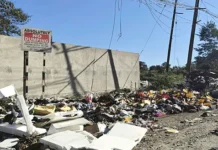[ Kara Mimpu ]
Arunachal Pradesh, the extreme northeastern state known for its rich tribal culture and pristine landscape, has long maintained a unique socio-political identity through the Inner Line Permit (ILP) system. Introduced during the British colonial era under the Bengal Eastern Frontier Regulation Act of 1873, the ILP aims to protect indigenous cultures and prevent unchecked migration.
However, in the modern context, this system is both a shield and a challenge, especially in dealing with immigration-related issues.
The ILP is essentially a travel document required by Indian citizens from another state to enter Arunachal. Its purpose is to preserve the identity and heritage of the state’s 26 major tribes and over 100 sub-tribes. It serves as a legal barrier to protecting land ownership, traditional practices, and demography from external influence.
Despite the ILP, the state faces growing challenges from illegal immigration, particularly from neighbouring Assam, Bangladesh, and Myanmar. Many immigrants have settled in Arunachal illegally with fake ST (Scheduled Tribe) certificates, fully enjoying all the privileges. Non-APSTs are affected in many ways by getting ST certificates by not following government rules. With an ST certificate they can purchase land and settle permanently as the APSTs. This has led to tension between indigenous communities and settlers over land rights, economic opportunities, and cultural dilution.
The arrival of outsiders can gradually dilute indigenous cultures, languages, and traditions. Arunachal’s tribal communities fear the erosion of their unique identities due to external influences. Similarly, in the case of the side of Assam, Nagaon is generally considered part of central Assam, which was ruled by the Karcharis and Ahoms historically. Now their indigenous communities have been diluted with communities of immigrants. There is often mistrust between locals and migrants, particularly over land encroachment, religious differences, and cultural practices.
Locals express concern that the influx of outsiders,legal or not, affects employment opportunities and disrupts social harmony. Outsiders often take up low-wage labour jobs (construction, road work, and shop) because they’re willing to work for less, which results in the loss of jobs for local unskilled and semi-skilled youths, rising unemployment, and underemployment among the indigenous population. Many outsiders do not pay taxes or are part of the unregistered businesses, which reduces the state’s revenue and distorts the local economy by encouraging the grey market practices. The strain on public services and infrastructure, and a growing non-native population (especially undocumented workers) increase the demand for healthcare, water, and electricity. This overburdens the government spending, reducing the number of resources available for locals.
The state government, alongside community organisations, should increase surveillance and verification drives, especially in border districts. Some organisations, like the ST Bachao Andolan Committee, have taken the initiative to protect indigenous communities with strong surveillance and verification in various places, especially on the side of the border. I truly appreciate their initiative to protect indigenous identity and land for future generations. There are also calls for digitising the ILP system for better monitoring, which ensures that it does not become a tool for discrimination. In this evolving landscape, the ILP remains more than a document; it is a symbol of Arunachal’s identity. How it is implemented and adapted will define the state’s future amid growing migration pressure. (The contributor is a BA LLB student, and can be reached at mimpukara@gmail.com)


